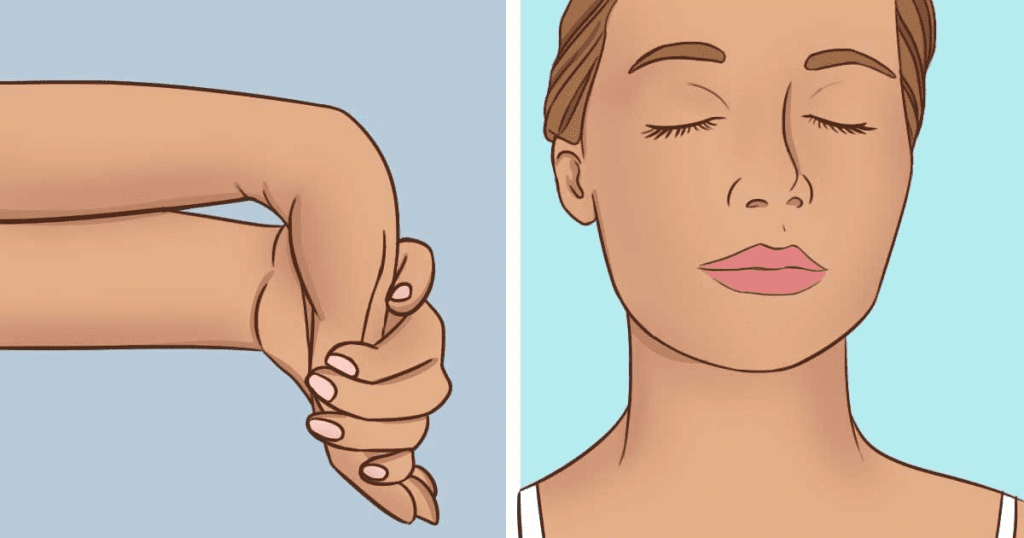In today’s fast-paced world, stress and anxiety are all too common. Whether you’re juggling work deadlines, family responsibilities, or personal challenges, it’s easy to feel overwhelmed. Fortunately, there are natural methods to help manage these feelings. One such method is Shiatsu, a Japanese massage technique that has been practiced for centuries. Shiatsu, meaning “finger pressure” in Japanese, involves applying pressure to specific points on the body to promote relaxation, balance energy, and reduce tension. In this article, we’ll explore how you can practice Shiatsu at home to ease stress and anxiety.
Understanding Shiatsu: A Brief Overview

Shiatsu is rooted in the principles of traditional Chinese medicine, focusing on the body’s energy pathways, known as meridians. Practitioners believe that when energy, or qi, flows freely through these meridians, the body remains balanced and healthy. However, when energy becomes blocked or stagnant, it can lead to discomfort, stress, or illness. Shiatsu aims to restore balance by applying pressure to specific points along these meridians, using the fingers, palms, and sometimes elbows.
You don’t have to be a professional to benefit from this practice. With a little guidance, you can perform simple Shiatsu techniques on yourself to alleviate stress and anxiety. Let’s explore some practical methods you can incorporate into your daily routine.
1. Anxiety Reduction Technique
Anxiety can take a toll on your mental and physical well-being. It can disrupt your sleep, make concentration difficult, and leave you feeling on edge. Fortunately, there’s a Shiatsu hand massage technique that has been shown to help reduce anxiety and promote better sleep. According to experts, applying pressure to certain points in the hand can help calm the mind and prepare the body for restful sleep.
To practice this technique, use your thumb to press into the center of your palm, where your middle finger naturally touches when you make a fist. Apply gentle, consistent pressure while taking deep breaths. Hold for one to two minutes and then release. This simple exercise can be done before bedtime to help ease anxiety and encourage deeper sleep.
2. Stress Reduction Technique
Stress, like anxiety, can negatively impact your daily life, affecting your productivity, mood, and overall health. The stress reduction technique used in Shiatsu involves focusing on key points in the body to release tension quickly.
A simple method is to press the area between your thumb and index finger, often referred to as the Hegu point. Applying pressure here can help relieve headaches, tension, and overall stress. Use your opposite thumb and forefinger to pinch this spot firmly, holding for about 30 seconds while breathing deeply. Repeat on the other hand for a fast and effective stress-relief solution.
3. The 3-Point Stress Reduction Technique
Another helpful Shiatsu method for reducing stress involves three key areas: the face, palms, and feet. This 3-Point Stress Reduction method can be practiced anywhere and doesn’t require any special equipment.
- Face: Using two fingers, press gently on each side of the bridge of your nose. Hold this position for one minute while breathing slowly and deeply. This can help ease facial tension and promote relaxation.
- Palm: Make a closed fist and press on the spot where your middle finger touches the center of your palm. Hold the pressure for about 30 seconds. This point is connected to the heart and lungs and can help relieve emotional tension.
- Foot: On the top of your foot, press the area between your first and second toes. Use your thumb to apply upward pressure in small movements for 30 to 60 seconds. This point is linked to reducing stress and encouraging grounding energy.
These three techniques, when combined, can significantly reduce stress and help you feel more centered and calm.
4. Balancing Energy with the Heart Meridian

Shiatsu also emphasizes the importance of balancing energy along the Heart Meridian, a channel that runs along the arms and chest. For this technique, sit comfortably and place your thumb on the inside of your wrist, about two finger widths below the base of your palm. Press this point gently but firmly while taking slow, deep breaths. Hold for one minute, then repeat on the other wrist. This exercise helps balance emotions and brings a sense of peace.
5. Easing Tension in the Neck and Shoulders
Tension in the neck and shoulders is a common physical manifestation of stress. Shiatsu offers a simple technique to ease this discomfort. Using your fingers, apply gentle pressure to the base of your skull, where the neck meets the head. Press and release for a few minutes, working along the length of the shoulders. This can help release tightness and improve circulation, leaving you feeling more relaxed.
6. Creating a Relaxing Environment for Shiatsu

To get the most out of your Shiatsu practice, create a peaceful environment. Find a quiet space, dim the lights, and consider playing soft music or lighting a candle. The goal is to enhance relaxation by eliminating distractions. You don’t need to spend hours practicing Shiatsu—just a few minutes of focused pressure on key areas can make a big difference in how you feel.
Conclusion: Incorporating Shiatsu into Your Self-Care Routine
Shiatsu is more than just a massage technique; it’s a holistic approach to managing stress and anxiety. By practicing these simple Shiatsu techniques at home, you can improve your emotional and physical well-being without the need for expensive treatments or professional interventions. From reducing anxiety to relieving stress, Shiatsu offers a natural, effective way to bring balance and calm into your life.
Remember, the key to successful Shiatsu is consistency. By incorporating these techniques into your daily routine, you’ll not only manage stress more effectively but also nurture a deeper connection with your body. Give these methods a try and share them with friends and family who might also benefit from the calming effects of Shiatsu.


